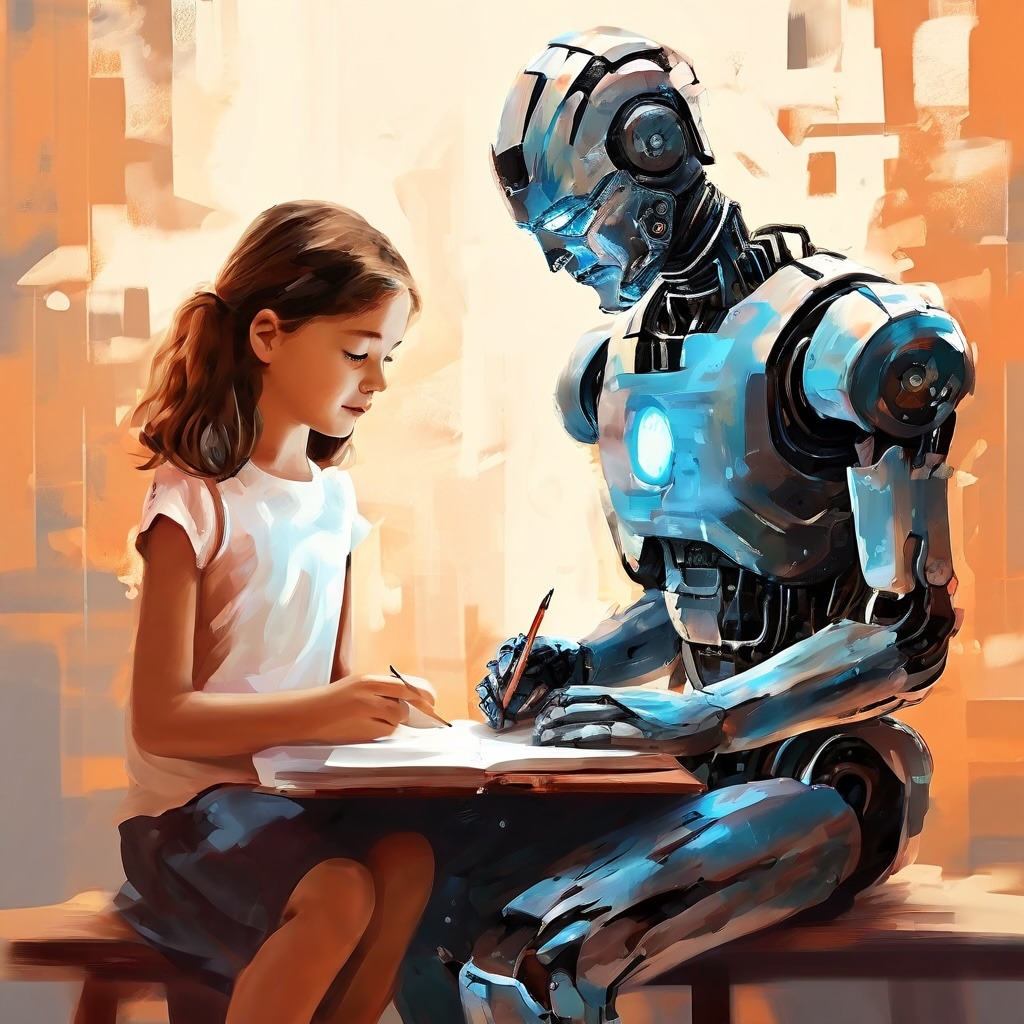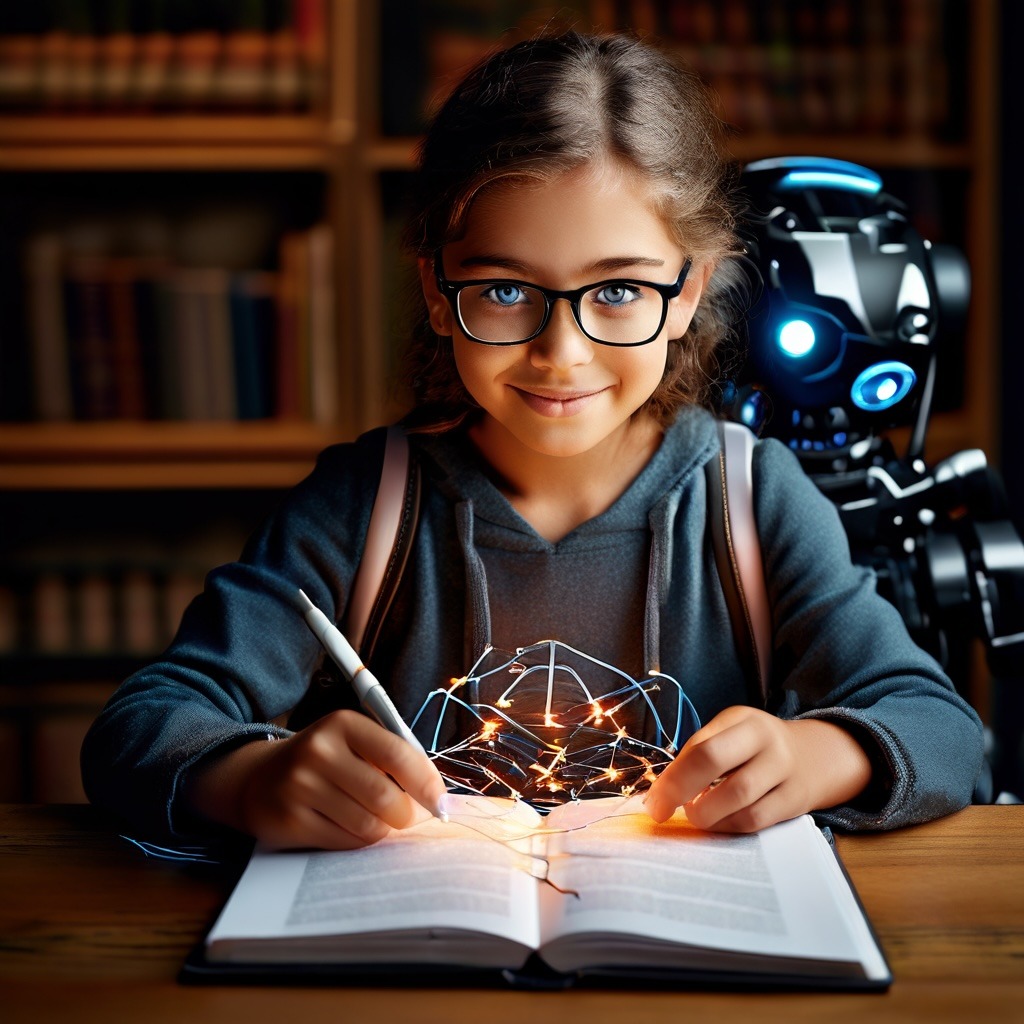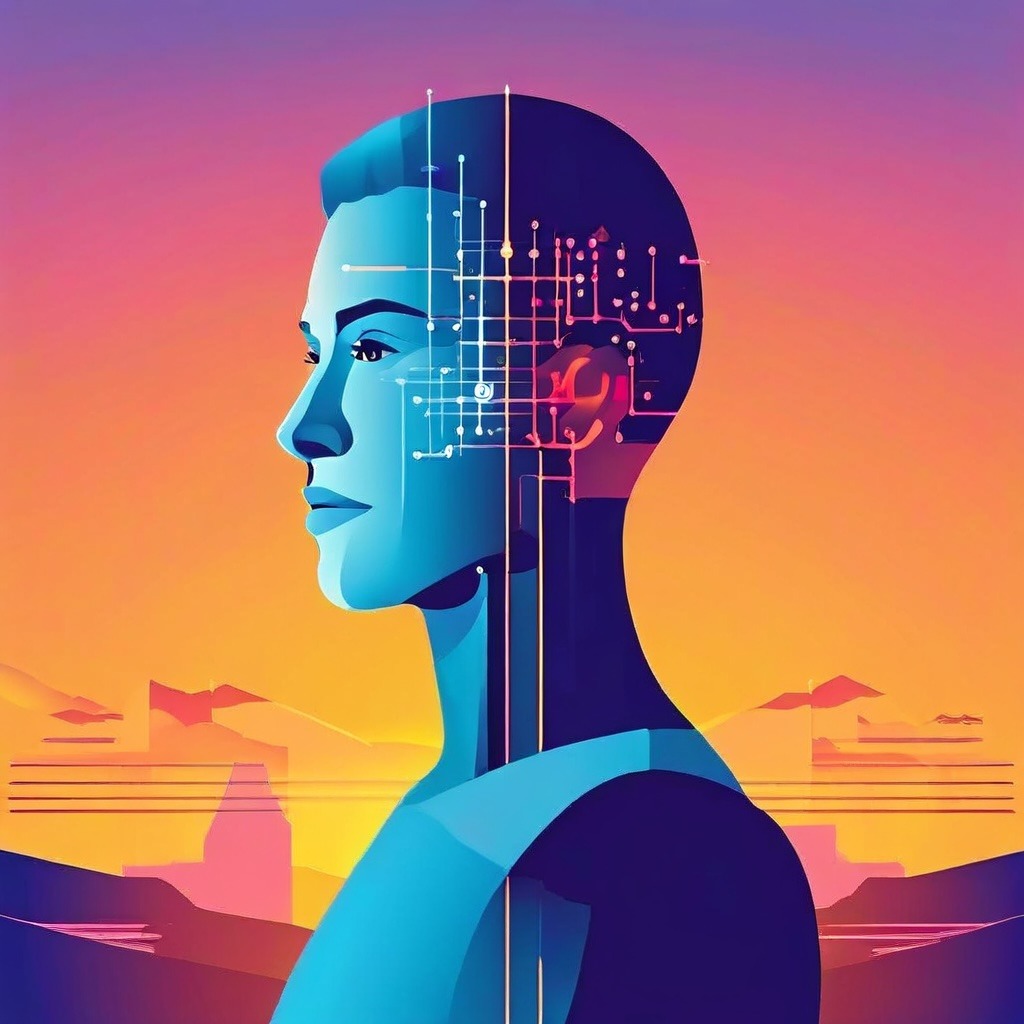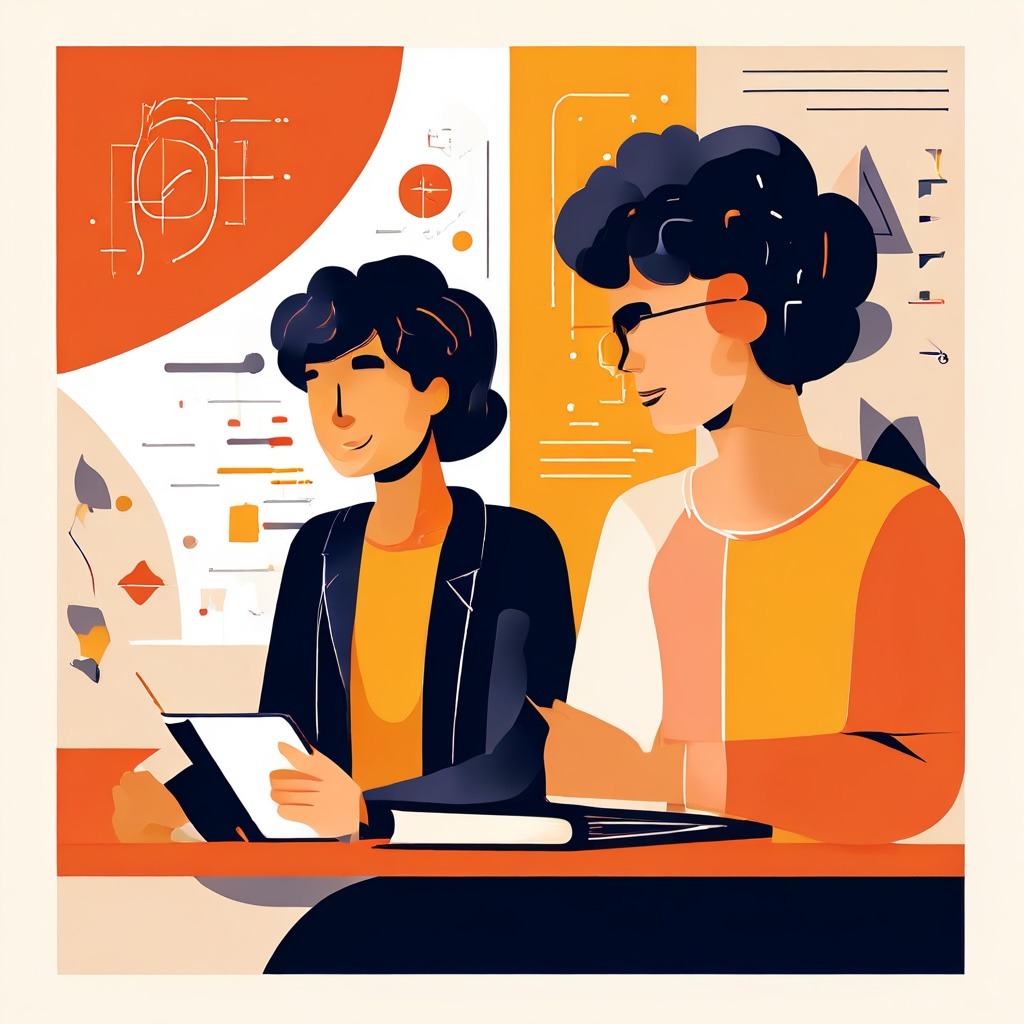As educators, we’re constantly seeking innovative ways to enhance learning experiences and make education more accessible for all students. In recent years, artificial intelligence (AI) has emerged as a powerful tool to revolutionize education, particularly in addressing the diverse needs of learners. This post explores “Using AI in Education: Enhanced Accessibility for Diverse Learners” – a critical topic for teachers, administrators, and education technology professionals alike. Artificial intelligence in education is transforming how we approach personalized learning, adaptive technologies, and inclusive classrooms. By leveraging AI-powered tools and machine learning algorithms, educators can create more engaging and effective learning environments that cater to students with different abilities, learning styles, and backgrounds. From AI tutoring systems to assistive technologies for students with disabilities, the applications of artificial intelligence in the classroom are vast and promising. This comprehensive guide will delve into practical use cases, benefits, and considerations for implementing AI to enhance accessibility and support diverse learners in K-12 and higher education settings. Whether you’re a tech-savvy teacher looking to integrate AI tools into your curriculum or an education leader exploring ways to make your institution more inclusive, this post will provide valuable insights on harnessing the power of AI to create equitable learning opportunities for all students. Let’s explore how artificial intelligence is reshaping education and paving the way for more accessible, personalized, and effective learning experiences.
Empowering Diverse Learners with Enhanced Accessibility
As a teacher with over a decade of experience in the classroom, I’ve witnessed firsthand the challenges of meeting the diverse needs of all students. Every child learns differently, and it’s our job as educators to ensure that each student has the opportunity to succeed. In recent years, artificial intelligence (AI) has emerged as a powerful tool to help us achieve this goal. In this post, I’ll explore how AI is revolutionizing accessibility in education, making learning more inclusive and effective for all students.
The Changing Landscape of Education
Before we dive into the specifics of AI in education, let’s take a moment to reflect on how our classrooms have changed. When I first started teaching, differentiation meant creating three different versions of a worksheet or lesson plan. Now, we’re expected to personalize learning for each student, taking into account their individual strengths, weaknesses, and learning styles.
This shift towards personalized learning is fantastic for students, but it can be overwhelming for teachers. We’re juggling more responsibilities than ever before, from lesson planning and grading to communicating with parents and addressing social-emotional needs. It’s no wonder that teacher burnout is at an all-time high.
As educators, we constantly strive to create inclusive and equitable learning environments that cater to the diverse needs of our students. The advent of Artificial Intelligence (AI) in education offers a transformative opportunity to enhance accessibility for diverse learners. From personalized learning experiences to real-time support, AI-powered tools are revolutionizing the way we teach and support our students. In this post, we’ll explore how AI can be leveraged to create more accessible and inclusive educational experiences, focusing on practical applications and benefits for diverse learners.
Understanding Diverse Learners
Before we explore how AI can help, let’s review what we mean by “diverse learners.” This term encompasses a wide range of students, including:
- Students with learning disabilities. This group includes students with dyslexia, dysgraphia, dyscalculia, and other conditions that impact their ability to read, write, or perform mathematical calculations.
- Students with physical disabilities. These students may have mobility issues, vision impairments, hearing loss, or other physical challenges that can affect their ability to participate in traditional classroom activities.
- English Language Learners (ELLs). hese students are learning English as an additional language and may require extra support to fully engage with the curriculum.
- Gifted and talented students. While these students may excel academically, they often require differentiated instruction to stay engaged and challenged.
- Students with attention disorders. Students with ADHD or other attention-related disorders may struggle with focus, organization, and completing tasks.
- Students with autism spectrum disorders. Students on the autism spectrum or those with other neurodivergent conditions often have unique ways of learning and interacting that may not be fully addressed in traditional classrooms.
- Socioeconomic Factors. Students from disadvantaged backgrounds may lack access to resources, support, or enriching experiences outside of school, which can impact their academic progress.
- Students with different learning styles (visual, auditory, kinesthetic). The idea of learning styles, especially the VAK model, suggests that students have preferred ways of receiving and processing information.
Each of these groups has unique needs, and within each group, individual students have their own strengths and challenges. As teachers, our goal is to create an inclusive classroom where every student can thrive. AI is proving to be an invaluable tool in achieving this goal.
How AI Enhances Accessibility
Now, let’s explore some specific ways that AI is enhancing accessibility for diverse learners:
Personalized Learning Paths (PLPs)
One of the most exciting applications of AI in education is its ability to create personalized learning paths for each student. AI-powered platforms can analyze a student’s performance, identify areas of strength and weakness, and adjust the curriculum accordingly.
For example, imagine a math program that adapts in real-time based on a student’s responses. If a student is struggling with fractions, the program might provide additional practice problems and explanations. If the student excels at geometry, it might introduce more challenging concepts earlier.
This level of personalization would be nearly impossible for a single teacher to achieve for every student in a classroom. With AI, we can ensure that each student is working at their optimal level of challenge, neither bored nor frustrated.
Text-to-Speech and Speech-to-Text
For students with visual impairments or reading difficulties, AI-powered text-to-speech technology can be a game-changer. These tools can read aloud digital text, making textbooks, worksheets, and online resources accessible to all students.
On the flip side, speech-to-text technology allows students who struggle with writing to dictate their thoughts. This is particularly helpful for students with dysgraphia or physical disabilities that make writing difficult.
As a teacher, I’ve seen how these tools can boost a student’s confidence and independence. When students can access and produce content without barriers, they’re more likely to engage with the material and demonstrate their understanding.
Real-Time Language Translation
In our increasingly diverse classrooms, language barriers can be a significant obstacle to learning. AI-powered translation tools are making it easier for English Language Learners to participate fully in class.
Imagine a scenario where a student can wear earbuds that provide real-time translation of the teacher’s lecture. Or picture a classroom discussion where students’ comments are automatically captioned in multiple languages on a shared screen. These technologies are no longer science fiction – they’re becoming a reality in many schools.
As someone who has taught in schools with high ELL populations, I can’t overstate how transformative this technology could be. It allows students to learn content in their native language while simultaneously developing their English skills.
Intelligent Tutoring Systems
AI-powered tutoring systems are becoming increasingly sophisticated, providing one-on-one support that adapts to each student’s needs. These systems can identify when a student is struggling with a concept and provide targeted explanations and practice.
For example, an intelligent tutoring system might notice that a student consistently makes the same type of error when solving algebra problems. The system could then provide a specific lesson on that concept, complete with visual aids and practice problems.
As teachers, we can use the data from these tutoring systems to inform our instruction. If we notice that many students are struggling with a particular concept, we can adjust our teaching accordingly.
Emotional and Behavioral Support
AI is also making strides in recognizing and responding to students’ emotional and behavioral needs. For students with autism or social-emotional challenges, AI-powered tools can help identify emotions and provide guidance on appropriate social responses.
Some schools are experimenting with AI-powered chatbots that students can turn to for emotional support or advice. While these tools are not a replacement for human counselors, they can provide immediate support and flag serious concerns for follow-up.
Assistive Technologies for Physical Disabilities
For students with physical disabilities, AI is powering a new generation of assistive technologies. Eye-tracking devices allow students to control computers with their gaze, while brain-computer interfaces are opening up new possibilities for communication and interaction.
These technologies are still in their early stages, but they have the potential to dramatically improve accessibility for students with severe physical disabilities.
Early Identification of Learning Difficulties
AI algorithms can analyze patterns in student data to identify potential learning difficulties early on. By flagging these issues sooner, we can provide interventions before a student falls behind.
For example, an AI system might notice that a student consistently struggles with phonemic awareness tasks, a key predictor of reading difficulties. The system could alert the teacher, who could then conduct further assessments and provide targeted support.
Accessible Content Creation
AI is also making it easier for teachers to create accessible content. Tools can automatically generate alt text for images, create captions for videos, and even suggest ways to make documents more readable for students with dyslexia.
As a teacher who has spent countless hours trying to make materials accessible, I can attest to how valuable these tools are. They not only save time but also ensure that we’re consistently providing accessible content for all students.
Virtual Assistants and Chatbots
AI-powered virtual assistants and chatbots can offer real-time support to students, answering their questions and providing guidance outside of classroom hours. These tools can help students with organizational skills, remind them of deadlines, and offer explanations for complex topics, ensuring that they have the support they need to succeed.
Enhanced Engagement Through Gamification
Engaging students, especially those with attention disorders, can be a challenge. AI can enhance engagement through gamification, which involves incorporating game-like elements into the learning process. AI-driven educational games can adapt to the student’s skill level, provide instant feedback, and reward progress, making learning more interactive and motivating.
For example, a student with ADHD might struggle to stay focused during a traditional lecture but may find it easier to concentrate when learning through an interactive game that rewards their progress and keeps them engaged.
Creating Inclusive Content
AI can be used to create educational materials that are accessible to a wider range of learners. This can include everything from captioning videos to generating text descriptions of images for visually impaired students.
Enhancing Communication and Collaboration
AI-powered communication tools can help students who are non-verbal or have communication difficulties express themselves and participate in class discussions. AI can also be used to create virtual environments where students from diverse backgrounds can collaborate and learn from each other.
Practical Applications in the Classroom
As educators, it’s crucial to understand how AI can be practically applied in the classroom to enhance accessibility and support diverse learners. Here’s a deeper dive into each of the practical applications mentioned earlier:
Reading Support with Text-to-Speech Tools
Use Case: Text-to-speech (TTS) technology can be a lifeline for students with dyslexia or other reading difficulties. These tools convert written text into spoken words, allowing students to listen to their textbooks, reading assignments, and other educational materials.
Implementation: In my classroom, I’ve integrated TTS software into our digital learning platform. Students can highlight any text on their screens, and the software reads it aloud to them. This not only helps with comprehension but also with vocabulary acquisition and pronunciation.
Impact: One of my students with dyslexia has shown remarkable improvement in understanding complex texts. By listening to the content, she can grasp the main ideas and details without the frustration of decoding every word. This has boosted her confidence and participation in class discussions.
Personalized Math Instruction
Use Case: AI-powered math tutoring platforms can create personalized learning experiences for students at different skill levels. These platforms analyze students’ performance and adapt the difficulty of practice problems and instructional content accordingly.
Implementation: I use an AI-driven platform that assigns customized math problems to each student based on their individual performance. The platform includes interactive tutorials that provide step-by-step explanations for solving problems, and it adjusts the difficulty level in real-time based on the student’s progress.
Impact: A student who previously struggled with basic arithmetic now finds math more approachable and less intimidating. The platform’s adaptive nature ensures that he practices areas where he needs improvement without feeling overwhelmed. For advanced students, it introduces more challenging concepts, keeping them engaged and motivated.
Language Translation for ELL Students
Use Case: English Language Learners (ELLs) often face barriers in understanding classroom instructions and materials. AI-powered translation tools can provide real-time translations, making the content accessible to these students.
Implementation: In my classroom, I use AI translation apps that can translate spoken and written English into the students’ native languages. These tools are integrated into our learning management system, allowing ELL students to toggle between languages as needed.
Impact: This has significantly increased the participation of ELL students in classroom activities. For instance, a new student from Korea was initially hesitant to engage. With real-time translation, she now understands the lessons and actively participates in group discussions. This tool has been instrumental in bridging the language gap and fostering a more inclusive environment.
Predictive Analytics for Early Intervention
Use Case: Identifying students at risk of falling behind early allows for timely intervention. AI can analyze various data points, such as attendance, grades, and engagement levels, to predict which students may need additional support.
Implementation: I use an AI-based analytics platform that monitors student data and provides alerts for potential issues. This system highlights students who show signs of struggling, such as declining grades or irregular attendance, allowing me to investigate further and offer support.
Impact: One student who was frequently absent and showing a decline in performance was flagged by the system. Upon investigation, I discovered he was dealing with personal issues at home. Early identification allowed us to provide the necessary support, including counseling and flexible assignment deadlines, which helped him get back on track.
Engaging Lessons with Gamified Learning
Use Case: Gamification incorporates game elements into learning to increase engagement and motivation, particularly beneficial for students with attention disorders like ADHD.
Implementation: I’ve incorporated AI-driven educational games into my curriculum. These games adapt to each student’s skill level and provide instant feedback. For example, we use a math game that rewards students for correctly solving problems, and the difficulty level adjusts based on their performance.
Impact: Students who typically struggle to stay focused during traditional lessons are more engaged and excited to learn through these games. One student with ADHD, who often found it hard to concentrate, now looks forward to our math sessions. The immediate rewards and interactive nature of the games keep him focused and motivated, significantly improving his learning outcomes.
Supporting Students with Attention Disorders
Use Case: Students with attention disorders, such as ADHD, often struggle with maintaining focus, staying organized, and completing tasks. AI tools can provide tailored support to help these students succeed.
Implementation: I utilize AI-driven organizational tools and focus-enhancing applications to support students with attention disorders. For example, I use an AI-powered app that helps students break down their assignments into manageable chunks and set reminders for each task. Additionally, I incorporate focus-enhancing apps that use techniques like the Pomodoro method, which involves working in short, timed intervals with breaks in between.
Impact: One of my students with ADHD had difficulty staying on task and completing homework. By using the AI-powered organizational app, he was able to plan his assignments more effectively and set reminders to keep himself on track. The focus-enhancing app helped him maintain concentration during study sessions. As a result, his productivity increased, and he started submitting assignments on time. His grades improved, and he gained a greater sense of accomplishment and confidence in his abilities.
Enrichment for Gifted and Talented Students
Use Case: Gifted and talented students often need more challenging material and opportunities for deeper learning to stay engaged and motivated. AI can help provide personalized enrichment that meets their advanced learning needs.
Implementation: In my classroom, I use AI-driven platforms that offer advanced coursework and problem-solving activities tailored to gifted students. These platforms can provide access to higher-level content in subjects such as mathematics, science, and literature. Additionally, I incorporate AI tools that facilitate independent research projects, allowing gifted students to explore topics of interest in greater depth.
Impact: One of my gifted students showed a keen interest in advanced mathematics but felt unchallenged by the standard curriculum. Using an AI-powered learning platform, I was able to assign her more complex problems and advanced concepts beyond the grade level. She was also able to embark on an independent research project about quantum mechanics, guided by AI tools that provided resources and structured her learning path. This approach not only kept her engaged but also nurtured her intellectual curiosity and passion for learning.
Support for Students with Physical Disabilities
Use Case: Students with physical disabilities may face challenges in interacting with traditional educational materials and participating in classroom activities. AI tools can provide adaptive solutions to make learning more accessible.
Implementation: I use AI-driven speech recognition and text-to-speech tools to support students with physical disabilities. For instance, students with limited mobility can use speech recognition software to write essays and complete assignments by dictating their responses. Additionally, I incorporate AI-powered virtual assistants that can help students navigate educational websites and access digital content through voice commands.
Impact: One of my students with cerebral palsy found it difficult to write by hand or type on a keyboard. By using speech recognition software, he can now complete his writing assignments independently by dictating his thoughts. The text-to-speech tools allow him to listen to digital textbooks and other materials, making it easier for him to follow along with the class. These AI tools have significantly improved his ability to participate in classroom activities and complete assignments on his own.
Considerations and the Road Ahead
While AI offers numerous benefits for enhancing accessibility, it’s crucial to consider the ethical implications and data privacy issues associated with its use. Educational institutions must ensure that student data is protected and that AI tools are used responsibly. This includes:
Transparency and Accountability
Institutions should be transparent about how AI tools are used and ensure that there is accountability for their deployment. This includes providing clear information to students and parents about how AI tools work and how their data will be used
Ensuring Data Privacy
AI systems often rely on collecting and analyzing student data to provide personalized learning experiences. It’s crucial to ensure that this data is handled securely and that student privacy is protected. Educators should be aware of the data policies of the AI tools they use and communicate these policies clearly to students and parents.
Addressing Bias
AI algorithms can sometimes reflect biases present in the data they are trained on. Educators must be vigilant in identifying and addressing any biases in AI tools to ensure fair and equitable treatment of all students.
Equity of Access
Not all students have access to the necessary technology and internet connectivity to benefit from AI tools. As educators, we must work to bridge this digital divide by advocating for resources and support to ensure that all students can access and benefit from AI-enhanced learning.
Over-reliance on Technology
As powerful as AI tools are, they should supplement, not replace, human teaching. We need to strike a balance between leveraging technology and maintaining the crucial human elements of education.
Teacher Training and Support
To effectively leverage AI tools in the classroom, educators must be equipped with the necessary skills and knowledge. This includes:
Access to Resources: Ensuring that educators have access to the resources and support they need to effectively use AI tools. This can include access to technical support, instructional materials, and training programs
Professional Development: Providing ongoing training and professional development opportunities for educators to learn about AI tools and how to integrate them into their teaching practices.
Collaboration and Support: Encouraging collaboration among educators to share best practices and support each other in using AI tools. This can include creating communities of practice or professional learning networks focused on AI in education.
Ethical Considerations
AI systems can inadvertently perpetuate biases present in the data they are trained on. It’s important to be aware of these potential biases and take steps to mitigate them. Educators should critically evaluate AI tools and work to ensure that they promote equity and inclusion for all students.
Implementing AI in Your Classroom
If you’re interested in incorporating AI to enhance accessibility in your classroom, here are some steps you can take:
- Start Small: Begin with one or two AI tools that address specific needs in your classroom. For example, you might start with a text-to-speech tool for students who struggle with reading.
- Involve Your Students: Ask your students for feedback on the AI tools you’re using. They often have insights that we might miss.
- Collaborate with Colleagues: Share your experiences with other teachers. What’s working? What isn’t? How can you support each other in implementing these new technologies?
- Stay Informed: The field of AI in education is rapidly evolving. Make an effort to stay up-to-date on new developments and best practices.
- Advocate for Resources: If your school doesn’t have access to AI tools that could benefit your students, advocate for them. Present the potential benefits to your administration.
- Maintain a Critical Perspective: While embracing the potential of AI, maintain a critical perspective. Question how the tools work, what data they’re collecting, and how they’re impacting your students.
- The Human Touch: AI can’t replace the human connection and emotional support that teachers provide. It’s essential to use AI as a tool to enhance our work, not replace it.
To Summarize
As educators, our primary goal is to help every student reach their full potential. AI is providing us with powerful new tools to achieve this goal, particularly when it comes to enhancing accessibility for diverse learners.
From personalized learning paths to real-time language translation, from intelligent tutoring systems to early identification of learning difficulties, AI is revolutionizing how we support students with diverse needs. These technologies have the potential to make our classrooms more inclusive, engaging, and effective for all students.
However, it’s important to remember that AI is a tool, not a panacea. It should enhance and support our teaching, not replace it. The human elements of education – the relationships we build with our students, the empathy and understanding we bring to our classrooms – remain as crucial as ever.
As we move forward, let’s embrace the potential of AI to enhance accessibility, while also remaining mindful of the challenges and ethical considerations. By doing so, we can create truly inclusive classrooms where every student has the opportunity to thrive.
Our students deserve nothing less than our best efforts to meet their diverse needs. With AI as our ally, we’re better equipped than ever to do just that. The future of education is exciting, and I, for one, am eager to see how we can use these powerful tools to create more accessible, inclusive, and effective learning environments for all our students.
In my experience, the integration of AI into the classroom has been incredibly rewarding. I’ve seen students with dyslexia gain confidence in their reading abilities, English Language Learners participate more actively in class, and students with attention disorders stay engaged and motivated through gamified learning. While challenges remain, the potential benefits of AI for diverse learners are too significant to ignore. By embracing these technologies and continuing to advocate for equity and inclusion, we can create a more accessible and supportive learning environment for all students.
Follow our series of blog post on AI in education HERE





